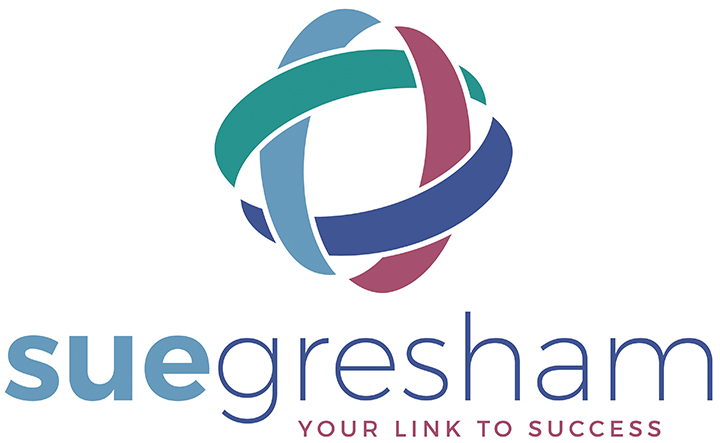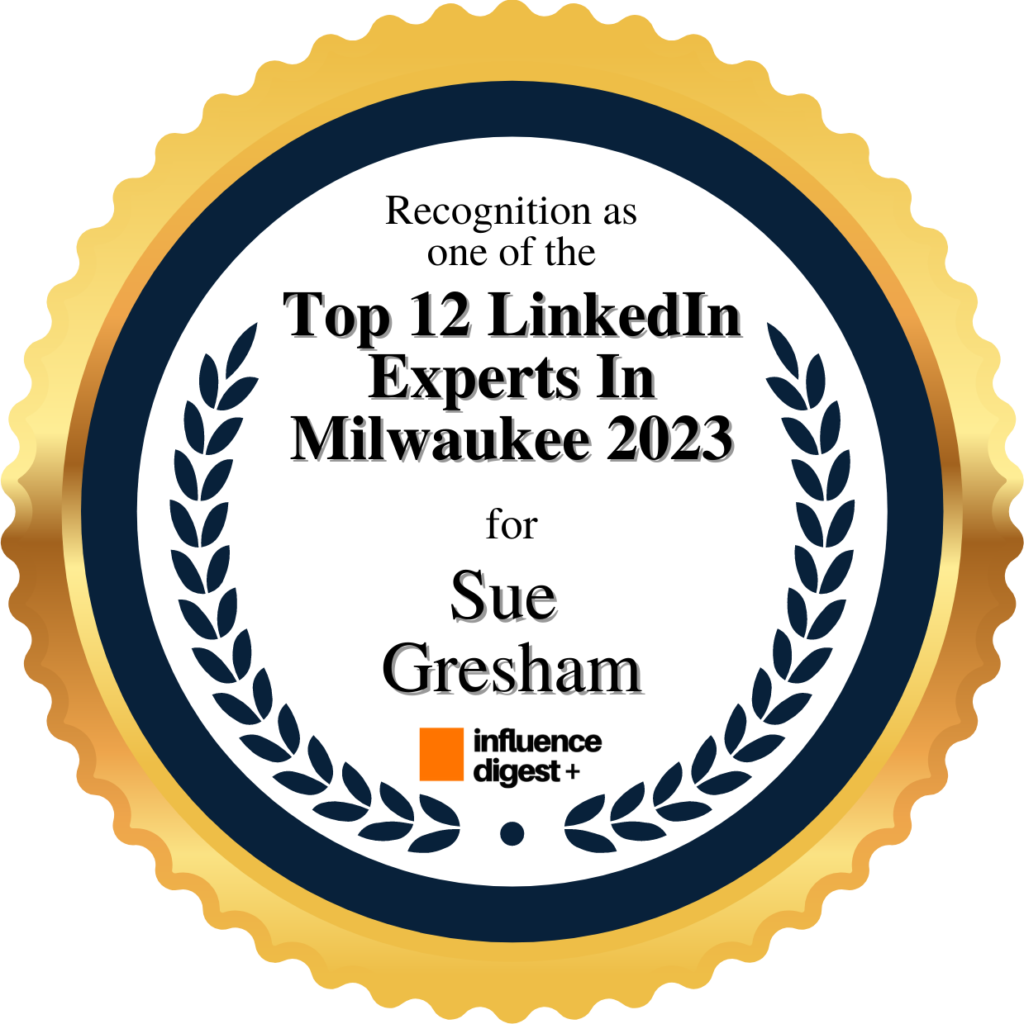The larger your LinkedIn network is, the better! Really? Well, maybe.
Remember when you first set up your account? LinkedIn recommended (and still does) that you invite only people you know and trust to be your 1st connections. Is that practical though? Part of the purpose of networking is getting to know new people. How do you build a network if you don’t allow those you don’t know well into it?
They allow us to send up to 3,000 invitations and have up to 30,000 connections. I’m pretty sure I don’t know 30,000 people. Building relationships and networking is what LinkedIn is all about. And it doesn’t seem logical that you can really get to know, like and trust all of your first connections if you have a large network, does it?
Does that mean you should build your network just because LinkedIn wants you to? It depends. It depends on your strategy. Are you using LinkedIn to find people, clients, or a job? Do you want to be found by others (recruiters, investors, clients)? Or are you on LinkedIn, “just in case”?
When I first started on LinkedIn, I only connected with people I had met in person. If I didn’t know someone, I tried to schedule a coffee with them to “get to know them” and then connect. After a while, that became impossible, especially when people started referring me to their friends and connections that weren’t located near me. And, I got pretty sick of coffee. My network started growing and by-the-way so has my business.
Most LinkedIn experts recommend having at least 500 connections on LinkedIn, in part to use it correctly and in part to show you are serious about being on LinkedIn. For most of us, that means connecting with a few people we don’t know.
I still believe you should know a little something about almost every one of your connections and if you don’t, take the time to learn more before you decide to connect. My solution is to exchange emails as part of your decision-making process.
Likewise, I also believe you need to be engaged with your connections – how else can you build relationships. Doing things like reaching out at birthdays, checking in periodically when you haven’t heard from someone in a while, answering and sending inbox messages, engaging in discussions and “sharing the love”. Is it reasonable to do all that with a large network?
I do think it’s possible and so does LinkedIn. They’ve built in some features that are designed specifically to reward you for having a big, quality network.
Here are some examples where a larger LinkedIn network makes a difference:
Status Updates
The hidden power behind the status update is that when you post something of value, your 1st-degree connections have a chance to see it on their Home Page news feed. The larger your network, the more people might see it. If just a few of them like, comment or even share your update, then their connections (your 2nd) have a chance to see it. Add in their connections and now you’re getting traction. It just keeps multiplying from there. Your updates can stay alive for days this way. You can be reaching a lot of people you don’t know. Think of the possibilities.
Skills Endorsements
Endorsements are the visual “social proof” of your skills. And they are a simple type of referral. Here’s the catch though; only your first connections can endorse you for a skill. If you have only fifty 1st degree connections you can only receive a maximum of fifty endorsements for a particular skill. There’s a good chance that over your lifetime, more than fifty people have witnessed many of your skills. If you aren’t connected to them, you won’t get their endorsements. So, the more quality connections you have that can actually endorse you for a skill they have witnessed and know you have, the better.
Recommendations
These are actually more powerful than the endorsements because you and your profile readers know the person writing them has felt strongly enough to invest time, energy and thought into crafting a nice recommendation (versus just clicking a button). And, just like endorsements, they can only be given to you by your first connections, so the more quality 1st connections you have, the better your chances of getting a written recommendation.
Job Listings
We all know that networking is a major part of the job search process. Getting the inside track on a job, having someone you know hand your resume to the hiring manager or better yet, giving you a recommendation increases a person’s odds of landing a new job. LinkedIn lists all of your connections at a particular business and they make it really easy to message them right there, from the job post.
Receiving Connection Requests
We’ve all received invitations to connect from people we don’t know. Right there, on the invite, you can see the list of connections you have in common. Obviously, the more connections you have, the better your chances of having shared connections.
People You May Know
It’s true, this feature can feel a little spammy and annoying at times. But keep in mind that the purpose here is to prompt you into building a network of people that you might have had a professional relationship within the past. It’s based on algorithms of who you are connected to, where you’ve worked, your schools and also the names you imported into LinkedIn from your email address book. LinkedIn is giving you the tools to find these people and connect to increase the size of your network.
Search Results
Have you noticed that as a general rule, unless you change the criteria when you search, the first people who come up are your first connections? After them, see your 2nd connections and group members. Then, finally at the end of the search rankings are people you aren’t connected to at all. If you have a lot of first connections and they have a lot of connections (your 2nds), your chances of showing up in someone’s search are that much higher. It’s one part of the LinkedIn algorithm.
How You’re Connected
When you look at a profile of someone you are not connected to, you can see if you have mutual connections in the Highlights section. Not only does this feature make it easy to ask for introductions, and for others to ask your connections to get introduced to you.
Followers
There’s a good chance you’ve seen a follow button when you look at someone’s profile or read their Articles. Following someone is not the same as being connected but it does allow you to read their status updates and posts. You can also follow group members (if they allow it). LinkedIn tracks your number of followers and includes your 1st connections in that follower count.
The Notifications Tab
This is my one of my favorite newer features on LinkedIn. It gives you a chance to stay in the loop on what’s happening within your immediate network. It helps me stay in contact with my network during their important events and communicate with people who engage with our updates.
What’s the Answer?
It can’t be overstated that people do business with people they know, like and trust. They also do business based on referrals from those that they know, like and trust. We see this in the offline world all the time. How many times do you say, “I know a guy who …”? If you have a large LinkedIn network, finding people and referring is that much easier.
So, is a large network better? It is if you want to be seen and heard. It is if you are looking for certain people or want to be found. It is if you are growing a business or a following. It is as if you are looking for a job and referrals or to be found by recruiters and hiring managers. But of course, it really depends on your goals and strategy.
There are pros and cons to having a big network. What do you think?
Related posts:
Is Your LinkedIn Network Right for You?
Good LinkedIn Invitations Include These 5 Things
photo credit: Flickr/ Ted Eyton

